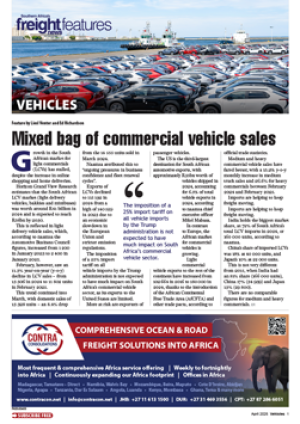So-called ‘Liberation Day’ has arrived, with President Donald Trump promising to shake the foundations of global trade by imposing sweeping new tariffs on nearly all major US trading partners.
But within six to 12 months, Trump will be forced to backtrack – not only because of economic pressures, but also due to political and strategic imperatives that make these tariffs unsustainable.
While the White House touts the roll-out of ‘reciprocal’ tariffs as a bold move to reclaim industrial might, they are a high-risk experiment that’s already fraying at the edges.
History says trade wars are easy to start but hard to win, and the early signs of strain are already visible across markets and boardrooms.
Investors have learned to tune out some of the noise that accompanies the Trump presidency, but this time is different.
The sheer scale and pace of the tariff implementation – from 25% levies on auto imports and Chinese goods to the blanket tax on countries buying Venezuelan energy – risks choking global supply chains and hiking prices for US consumers.
The administration may claim it can raise $100 billion from these new duties, but that figure is dwarfed by the economic drag they could unleash.
Retaliatory measures are already biting. China has slapped tariffs on American energy and agriculture. The auto industry, a critical US employer and export engine, is now staring down a crisis that will ripple from Detroit to Düsseldorf.
Inflationary pressure will build, especially with US companies passing import costs on to consumers. And it won’t take long for the political pain of higher prices to outweigh any perceived geopolitical leverage.
Trump has always prided himself on being a dealmaker but his hardball tariff strategy won’t last.
His political instincts, sharp as ever, will tell him when this economic brinkmanship becomes a liability. And it will. The ‘America First’ rhetoric can only carry so far once voters start to feel the squeeze from more expensive cars, food and consumer goods.
Investors, meanwhile, are not waiting to see how this plays out. Volatility is rising, business leaders are hesitating on capital spending, and international counterparts are beginning to craft long-term strategies that bypass US suppliers altogether.
This erosion of confidence will not go unnoticed – nor will it be allowed to fester for long. Tariffs imposed in haste will be walked back under the guise of renegotiation or tactical adjustments.
Even among Trump’s advisers there appears to be no clear consensus on the best path forward.
Reports of on-again, off-again trade actions, month-long tariff delays, and fluctuating definitions of “reciprocity” suggest the administration is still in flux – which leaves room for recalibration.
The 25% tariffs on auto imports, for example, could be among the first to face internal resistance. The car industry’s intricate global web means any sudden spike in costs will reverberate quickly through jobs, prices, and production schedules.
This is not the kind of economic collateral damage that goes unnoticed in an election cycle.
The White House may tout these policies as tough and transformative but, as the practical consequences become clearer – and they will – the more politically and economically viable option will be to scale them back. Quietly, perhaps, and over time, but decisively nonetheless.
Trump has made tariffs the cornerstone of his current trade agenda.
But this cornerstone could soon crack under the weight of its own contradictions.
Markets crave clarity, businesses need stability, and consumers demand relief from the very price shocks these policies create. A backpedal is not only likely – it’s almost inevitable.









